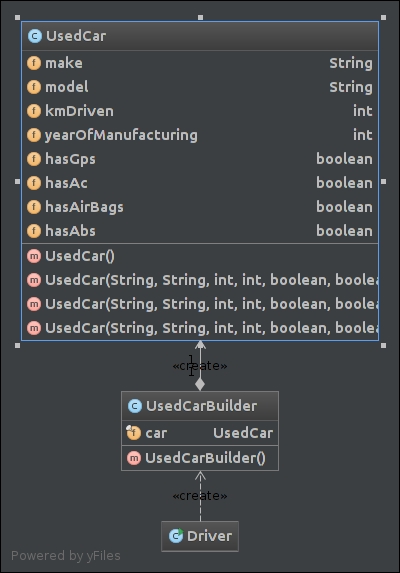Builders
We need to model used cars for a resell shop. We want to rate a used car by kilometers driven, year of manufacture, make, model, accessories installed such as GPS, Air Conditioning (AC), and safety features such as air bags and anti-lock brakes (ABS). The list goes on and on.
Some of these attributes are mandatory and others are optional. For example, all cars will have the year of manufacture, kilometers driven, make and model. A car may not necessarily have GPS, AC, airbags or ABS.
We also need to validate the arguments. The kilometers are not negative, year of manufacture is something sensible (for example, not 1425 A.D.), and the make and model should match—make as Maruti and model as Corolla should be flagged as an error.
To handle all these requirements, we use the Builder pattern. Here is the UML diagram and then the code follows:

Figure 2.5: UML diagram for Builder
public class UsedCar {
private String make;
private String model;
private int kmDriven;
private int yearOfManufacturing...























































